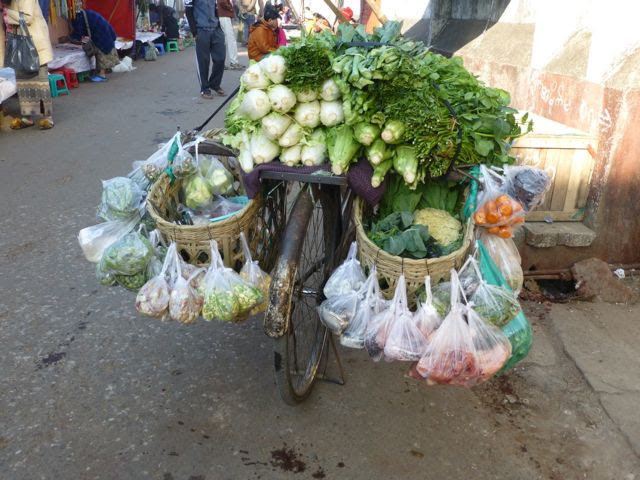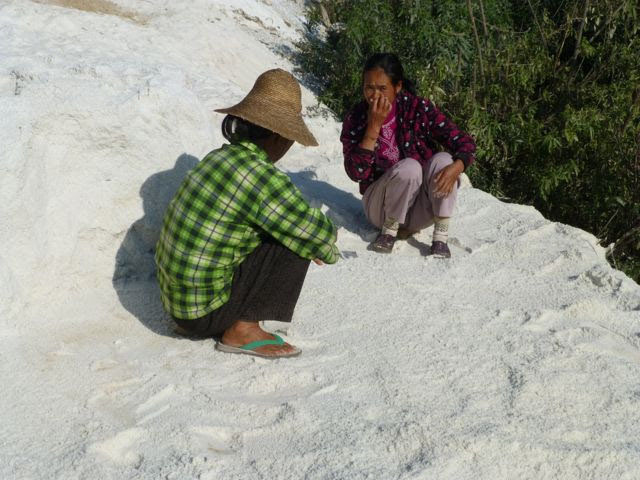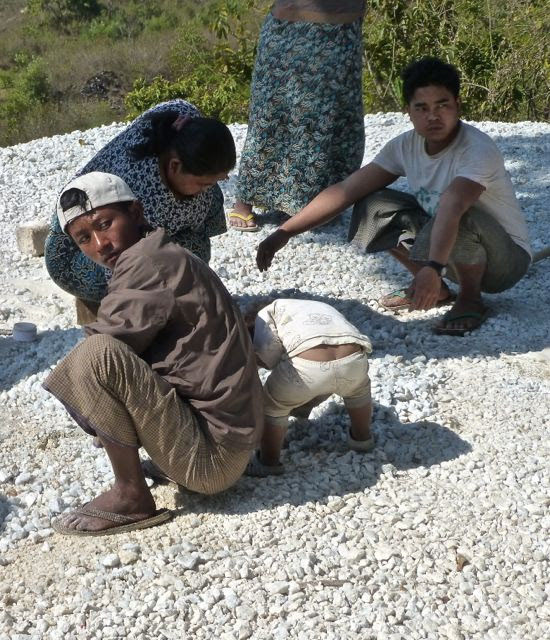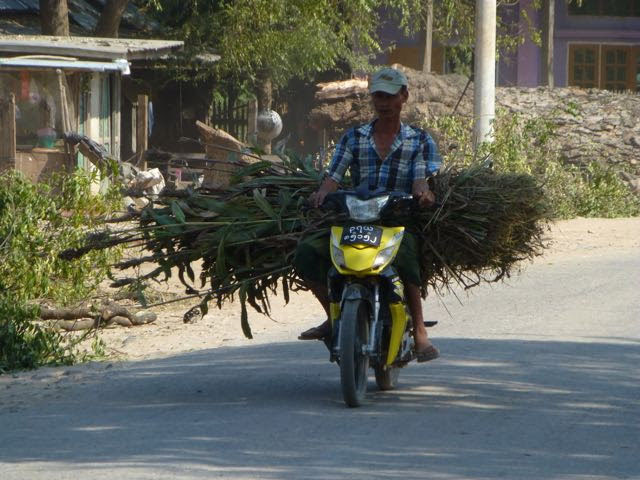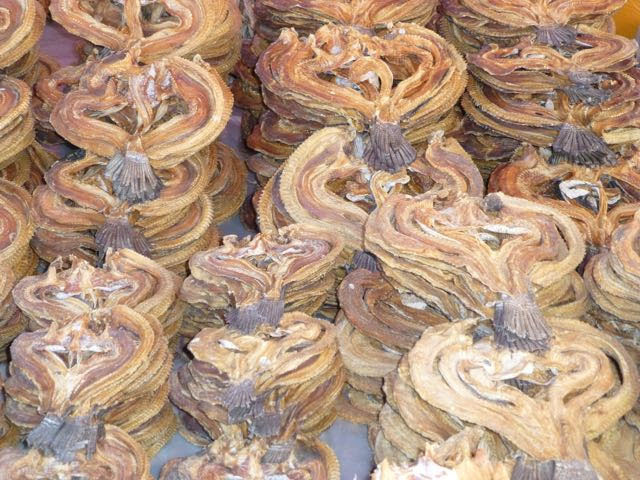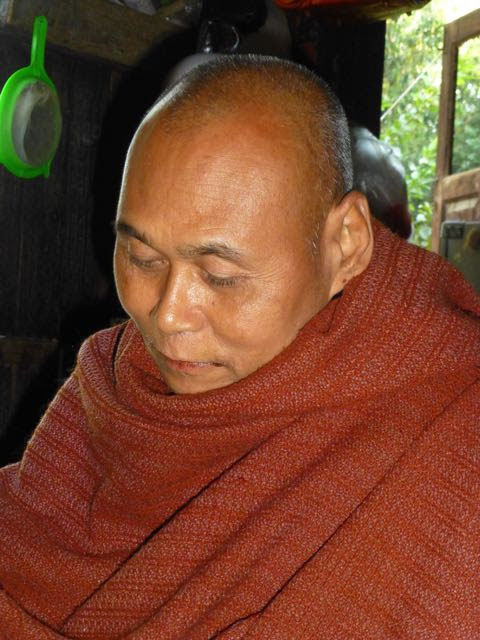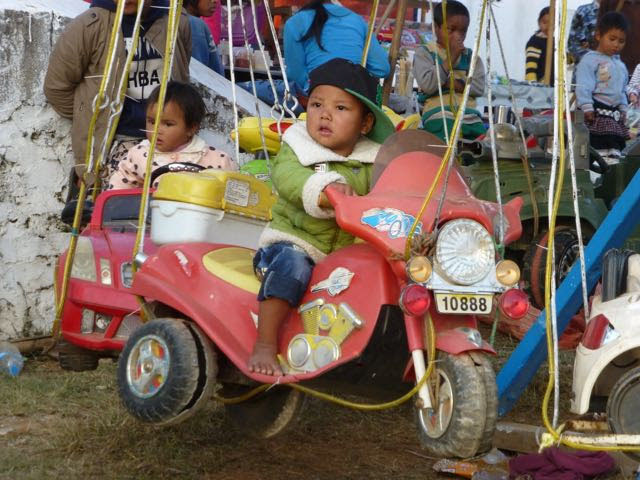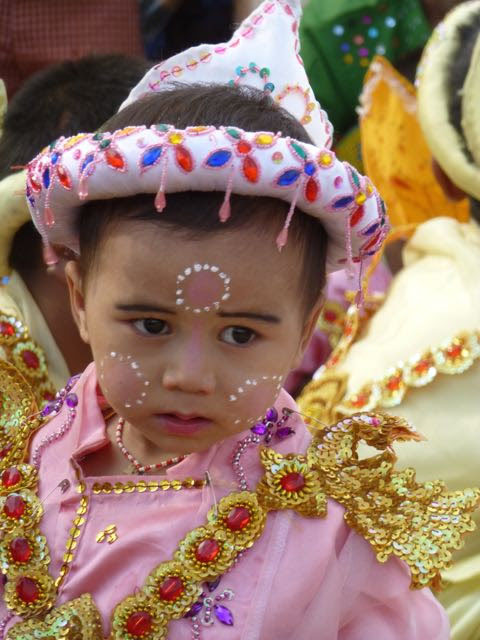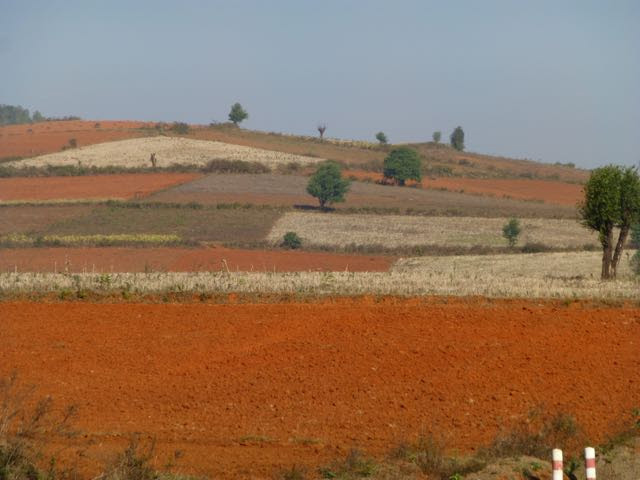End of the Road
Our car jerks into an open sliver of sun-baked street, Bernard at the wheel, me staring out the side window so I don’t scream at how close everything is. Start. Stop! Advance a few inches. Stop!!! Despite my severe nearsightedness, at this rate I can easily read the road sign that says SRINAGAR. I’m a road worrier, not a road warrior, and now I fret it will take us as long to get to our hotel as it did to drive the entire 2200km from Delhi via Ladakh. Eyeing our MapMyIndia GPS, I see we’re advancing in meters instead of kilometers. My leg taps and I twist my hands in my lap. It’s June 12, I’m thirsty, I’m hungry, and there are Mughal gardens to visit, handicrafts to assess, kawa tea to sip, and, if I plan things right, a pedicure to indulge in.

Then again, I’m ecstatic to be on level ground, since I’m still not recovered from our descent of Zojila Pass. Tho’ we’ve driven close to 100,000 miles in the past 7 years, Zojila is the scariest road I’ve ever been on, not helped by me being on the outside looking at the long plunge down, while Bernard held a movie camera out his window with one hand, steering with the other. In the interest of marital harmony I’ve kept quiet about lots of shenanigans on our road trips, but this time I say some stern words to remind him Bollywood was not yet knocking on his door. And then I sucked in my breath, thinking it would make me thinner and thereby prevent us tumbling down the cliff face, creating the sort of headlines I never want to make in a foreign country.

Thus, we reach Srinagar in the company of every working bus, car, and motorbike, which swarm around us, horns blaring, while pedestrians crowd into the empty spots, all intent on getting to where they’re going before we get to where we’re going. The sun beats down and a humid haze turns fabled Dal Lake, of the palace houseboats and floating gardens, into a faded painting of yesteryear. Soldiers lounge along the roadside, rifles slung over shoulder, casually chatting, eyeing the raucous traffic. They occupy the same shade of massive chinar trees as the dogs sleeping off a hard night of barking. The similarity of their camouflage uniforms to the dappled shade not withstanding, they’re highly visible. Poor Kashmir, tugged this way by India, that way by Pakistan, wanting only to be left alone as an autonomous region. Despite Indian government claims of necessity, this military presence is oppressive. And honestly, if anyone’s going to attack, they’re not going to do it by
strolling down the avenue in broad daylight, are they? Who could mount a full frontal assault in such traffic mayhem anyway? So I say, move those soldiers out of town and get rid of the guns on the street.

A splash of cool water on my face, a quick change into my favorite flowing green batik dress topped by a filmy pale blue shirt cinched at my waist, and we are on our way to Cottage Chinar on the Bund, shop of Mr. Sadiq Wani, himself the grandson of a papier mache artist Bernard met 35 years ago. My travel mantra : spend time with people who exist today, rather than with ancient monuments of yesteryear. I know, I know, this is not the usual way. Still, when I travel in far-off places, I want nothing more than to blend in, and spending time with people is the best way I know to do that. An afternoon with a potential new pal is fine with me.

As we enter into deep conversation with the erudite Mr. Wani, I forget I am a foreigner. When he proposes a cup of Kashmir’s signature kawa I say Yes quickly, before Bernard, who’s a coffee drinker, can say No. Quiet clinking and stirring drifts from a small back room and Mr. Wani returns, bearing two delicate porcelain cups covered in lapis and gold filigree. As I stir the small Kashmiri almonds in the cardamom/cinnamon brew, a curl of gently spiced steam rises from the cup. Although the tea begins to cool, I sip slowly. A warm breeze enters through the small frame windows, sent to soothe us by the ancient chinars that hold this white and green cottage in protective embrace. In this quiet shop with pink hollyhocks in the garden and mynahs tweeting in the high branches, I want to prolong our peaceful afternoon as long as possible.

I can hear readers cry, “But what about Srinagar’s mosques, temples, forts? Didn’t you visit them?” Call me a poor tourist, but don’t call me a bad traveler. I cherish these simple experiences. Like our walk in Srinagar’s Badim Weer, the almond grove garden, unlocked for us by a kind park guardian late one the afternoon as the sun’s harshness was fading and the lake provided natural cooling. Alone among the almond trees, past stands of luscious magenta and canary dahlias, we dawdle while hawks circle the updraft of Hari Parbat hill and the red brick Durrani fort atop it. I daydream of drifts of white and pink almond blossoms covering the ground like snow.

One evening, in the late twilight of this Ramadan, I don my favorite outfit, a kameez top of bright embroidered magenta cotton setting off my deep burgundy, ballooning salwar trousers, topped by a dupatta scarf of olive, tawny yellow and red, woven through with gold threads. We are invited to a local home in Raj Bagh to break the fast. Down a narrow lane, through a green door set deep in a mud brick wall, and we enter a magic garden of green lawn, yellow sun flowers and brash orange geraniums.
Halima, our hostess, welcomes us to a table set with Kashmiri dishes. To be honest, I’ve heard Kashmiri cooking is intensely spicy. And I don’t do spiciness well. It turns my face red, I drip with sweat in a most unfeminine way, and my eyes water as if I’ve just heard of a death in the family. As we sit down I try to calm my nerves, dreading I might offend our hostess by not being able to eat much. Fearing just this sort of spice calamity, I’ve used my favorite ploy which is to distract and conquer. To be specific, we’ve arrived bearing gifts, and not just any gift, but the Taj Vivanta’s chocolate truffle cake, best in Srinagar I’m told. My hope: that the promise of sweets will distract or at least make up for any ill manners I might display.
But there’s something else that makes me anxious. Bernard turns to me when he can’t deal with what’s edible or drinkable in front of him. As he’s my savior on the road, so I’m his with food and beverages. Thus, in a Tibetan monastery I had to drink his cup of yak butter tea, too, though I could barely swallow mine. And that rank glass of cloudy green/brown barley beer on a farm in Ethiopia? Yup, double-duty there as well. What would I do now if I had to finish his plate after perhaps not being able to make a dent in mine? Not only might I give the impression that American wives don’t let their husbands eat, I might burst. My salwar is roomy, but not THAT roomy!
I watch as he spoons creamy chicken, citrusy baby eggplants, homemade paneer with caramelized onions in tomato sauce and sautéed gourd mixed with bindi (okra) onto a plate heaped with basmati rice. He eats. He takes a second helping. I relax and do the same. We talk of many things, laugh, reminisce. It looks like I’ll have room for chocolate cake after all.
It’s the end of the road. ‘Til next time…….














